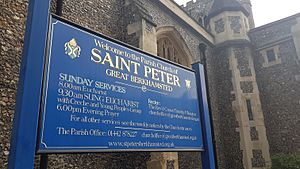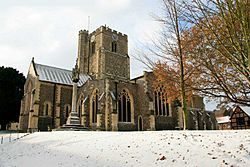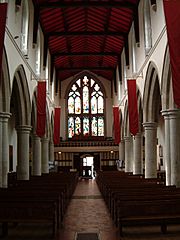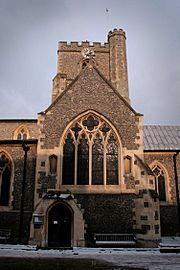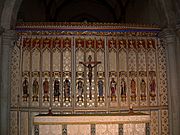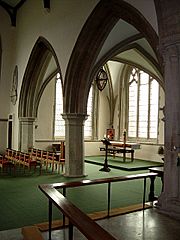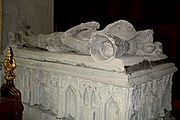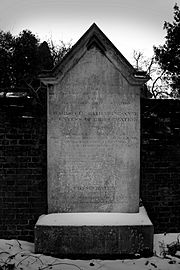Church of St Peter, Great Berkhamsted facts for kids
Quick facts for kids Church of St Peter, Great Berkhamsted |
|
|---|---|

Church of St Peter, Great Berkhamstead
|
|
| 51°45′35″N 0°33′42″W / 51.759673°N 0.561751°W | |
| Location | St Peter's Church, Church Lane, Berkhamsted, Hertfordshire, HP4 2AX |
| Country | United Kingdom |
| Denomination | Anglican |
| Website | stpetersberkhamsted.org.uk |
| History | |
| Founded | c.1222 |
| Founder(s) | Abbot of Grestein |
| Dedication | St Peter |
| Events | 1222: church founded 1230: nave extended 1320: St Catherine's Chapel built 1381: Richard II is royal patron 1350: St John's Chantry built 1546: tower raised 1820: Wyattville's restoration 1871: Butterfield's restoration; Earl Brownlow becomes patron 1960: Church re-ordered 1986: Present organ installed |
| Architecture | |
| Heritage designation | Listed II* |
| Style | Early English, Decorated; much Victorian restoration work |
| Years built | c.1200 |
| Specifications | |
| Length | 168 feet (51 m) |
| Width | 90 feet (27 m) |
| Height | 85 feet (26 m) |
| Administration | |
| Parish | Great Berkhamsted |
| Deanery | Berkhamsted |
| Archdeaconry | St Albans |
| Diocese | St Albans |
| Province | Canterbury |
The Parish Church of St Peter, Great Berkhamsted is a historic Church of England building. It is located in the town of Berkhamsted, Hertfordshire, in the United Kingdom. This church is special because it is a Grade II* listed building. This means it is a very important historic place. You can easily spot it on the main High Street. It has an 85-foot (26 m) tall clock tower.
This church is very old, dating back to around 1200. Its architecture shows styles from at least five different time periods. Most of these styles are from the 14th and 15th centuries. The church was greatly changed during the Victorian era. A major update was done by William Butterfield. St Peter's is one of the largest churches in the area.
Because it is close to Berkhamsted Castle, St Peter's has a long history with Royalty. For many centuries, the reigning monarch helped choose the church's rectors (head priests). Many people who attended the church also worked for the Royal family. Famous people like the poet William Cowper worshipped here. Also, John Incent, who later became a very important church leader, attended St Peter's.
Today, the church no longer has direct royal ties. It serves as the main parish church for Berkhamsted. Every year, the town celebrates the feast of St Peter with a special fair.
Contents
- History of St Peter's Church
- Architecture and Design of St Peter's
- Churchyard and Cemetery Areas
- St Peter's Church Today
- Images for kids
History of St Peter's Church
It is not known exactly when the first church was built on this spot. However, it is not the oldest church nearby. The church of St Mary in Northchurch is older. It is thought to be Saxon and was mentioned in the Domesday Book of 1086.
The right to choose the priest for a church in Berkhamsted was given to a monastery in France. This was for the church of St Mary and a chapel at the castle. This happened between 1087 and 1104. Around this time, the Parish of Great Berkhampstead was created. St Mary's was likely the main church until St Peter's became larger. This happened after the Norman Conquest. The main power moved closer to Berkhamsted Castle. By the 14th century, Northchurch got its name to tell it apart from St Peter's.
When Was St Peter's Church Founded?
The exact founding date of St Peter's Church is not certain. Some historians believe it was around 1222. This was the year Robert de Tuardo became the first known rector. He was appointed by the Bishop of Lincoln. The church was part of the huge Diocese of Lincoln at first. Later, it moved to the Diocese of Rochester in 1843. Then, in 1877, it became part of the new Diocese of St Albans.
Medieval Times at St Peter's
You can see a brass plaque inside the church today. It lists all the rectors from the 13th century until now. Many rectors served in the 14th century. This was likely because of the bubonic plague. Between 1369 and 1386, St Peter's had eight rectors. One, Thomas Payne, was only there for nine days.
John de Waltham was a rector of St Peter's starting in 1379. He also served many other churches, which was common then. He left after 16 months. Later, he became a bishop. John Waltham was very close to King Richard II. When Waltham died, King Richard gave him a special tomb. It is in Westminster Abbey, in the royal chapel. He was the only person not of royal blood buried there.
Important People in the 16th Century
There are brass memorials in the church for Katherine and Robert Incent. They were church members in the 1500s. Robert worked for a duchess at Berkhamsted Castle. Their son, John Incent, became a very important church leader. In 1541, he started the Berkhamsted School. The Incent family house is still on the High Street. It is now called "Dean Incent's House."
One rector, Rev. Thomas Newman, served for over 40 years. He was rector from 1598 to 1639. He was also a leader in Berkhamsted and mayor in 1631.
The English Civil War and St Peter's
Rev John Napier became rector in 1639. But during the English Civil War, Parliament removed him. Other priests were put in his place. After 18 years, Napier returned as rector in 1670. He stayed until 1681. Even when he was away, Napier still recorded his children's baptisms in Berkhamsted. He signed himself as rector.
No battles happened in Berkhamsted during the war. But Royalist soldiers sometimes passed through. In 1648, General Fairfax used St Peter's Church as a Military prison. He held captured soldiers from the Siege of Colchester there. The church was full of injured, hungry soldiers. Fairfax ordered the church windows to be taken out. When the church was returned, a special tax was collected. This tax paid for new windows.
Another long-serving rector was Rev Robert Brabant. He was rector for over 40 years (1681 to 1722). He was also a chaplain to Queen Anne.
After the king returned to power in 1660, John Sayer became chief cook to King Charles II. Sayer was a rich man who lived in Berkhamsted Place. He helped the town a lot. He was known to Samuel Pepys, who wrote about him in his Diary. In 1682, John Sayer left money in his will. It was for building almshouses on Berkhamsted High Street. These houses were for six poor widows. The almshouses were finished in 1684. They are still there today. Sayer's beautiful marble tomb is in the Lady chapel of St Peter's.
William Cowper, the Poet
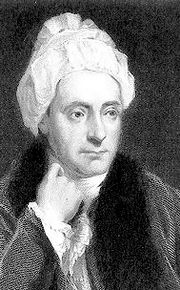
From 1722 to 1756, Rev John Cowper was rector of St Peter's. He is famous because he was the father of William Cowper. William was a poet and wrote many hymns. He was born in Berkhamsted in 1731 and baptized in the church. His hymns became very popular. They are still in Anglican hymn books today.
19th Century Changes
Rev John Wolstenholme Cobb wrote a lot about Berkhamsted's past. He wrote his History and Antiquities of Berkhamsted while working at St Peter's. He later became the rector from 1871 to 1883.
Members of the Dorrien-Smith family also attended St Peter's. They are remembered with memorials in the church. George Dorrien was a leader at the Bank of England. Several family members fought in the Second Boer War.
Royal Patronage of Rectors
For a long time, the abbot of Grestein chose the rectors for St Peter's. But in 1381, King Richard II started choosing them. This tradition of the king or queen choosing the rector continued for centuries. The last king to do this was Charles II in 1681. After that, princes of Wales chose the rectors. Later, the Earls of Brownlow took on this role.
Architecture and Design of St Peter's
The church has a cruciform (cross-shaped) layout. It is 168 feet (51 m) long from the west door to the east window. The width across the transepts (the arms of the cross) is 90 feet (27 m). The oldest part is the chancel (the area around the altar), built around 1200. It is in the Early English style. The transepts were built later, during the time of Edward II. They show the Decorated Period style.
How the Church Grew and Changed
The architecture of St Peter's is not from just one time period. It grew and changed over about 350 years. Many parts were added over the centuries. Later, Victorian updates changed the church a lot.
Building More and More (1230–1546)
In the 13th century, the church quickly expanded westwards. The nave (main part), transepts, and crossing were added soon after the chancel. In 1230, north and south aisles were added to the nave. The north transept was also extended. This extension is now the Lady Chapel.
On the south side of the Chancel, the chapel of St Catherine was added in 1320. In 1350, the St John's Chantry was built. This was a special chapel for the boys and teachers of Berkhamsted School. In 1450, a clerestory was added to the nave, making it taller. The church reached its current size in 1545-46. This is when the tower was raised to its 85 feet (26 m) height.
When the Church Needed Repairs
Over the years, parts of the building started to fall apart. Once, in the 1700s, the ceiling of the chantry collapsed. Luckily, the boys and teachers had just left. This event was written down by Nathaniel Salmon. He also reported that the collapse revealed old painted figures on the pillars. These might have been medieval paintings of the Eleven Apostles and Saint George and the Dragon. Salmon noted they had been "whited over" by Puritans during the English Civil War.
Wyattville's Restoration Work
The church continued to change. Doors were added or blocked up. Things inside were moved around. In the 19th century, major repairs happened. The first was in 1820, led by Jeffry Wyattville. He was an architect who also worked on Ashridge House. His work was controversial. Many original features of the church were destroyed. Wyattville covered the outside walls with stucco (a type of plaster). The font was moved. Old inscriptions were erased. The bells were recast. A new gallery was built at the west end.
Butterfield's Restoration Work
In 1870–71, another restoration was done by William Butterfield. He was a famous Gothic Revival architect. His work on St Peter's Church is seen more positively. But he also removed some original features. He erased the paintings on the pillars.
Butterfield made big changes. He raised the roof and floor of the chancel. He also raised the roof of the south transept. He removed the old vestry. He put in new oak benches. He replaced Wyattville's gallery. Butterfield also put clear windows in the clerestory. This let more light into the nave. He also blocked up a door that used to lead to the town's fire engine house. He removed Wyattville's crumbling plaster from the outside. He then covered the church walls with flint flushwork (a decorative pattern).
Modern Updates in the 20th Century
Between 1956 and 1960, St Peter's was updated again. The tower and nave got new roofs. St Catherine's Chapel and the nave were refreshed. A large painting of the Ascension was painted over. The church was also rearranged. The high altar was moved forward under the tower. The wooden 15th-century rood screen was painted and gilded. Carved figures were added higher up the screen. The screen was then used behind the altar. This created a new area for the altar. The old chancel became a vestry.
The Gothic Revival pulpit (where sermons are given) is from 1910. It has carved figures of angels. In the north aisle, you can see the Parish Chest. This is a beautifully carved 17th-century wooden chest. It used to hold church documents. Near the north transept is the marble tomb of Sir John Cornwallis. He was an important advisor to King Edward VI.
The Sanctuary Area
The high altar is under the tower. It sits on a raised white marble floor. The gilded reredos (a screen behind the altar) shows twelve saints. To the left, there is a long brass plaque. It lists all the rectors of Great Berkhamsted since 1222.
St John's Chantry Chapel
This chapel was used by the boys and teachers of Berkhamsted School. They used it for worship until the 19th century. Then, the school built its own chapel. This chantry is now used for the choir and organ. The current organ was built in 1986. It has two keyboards and is made of English oak and sycamore wood.
The chantry has brass memorials for Robert and Katherine Incent. They were the parents of John Incent. Another brass remembers John Raven. He was a squire to the Edward, the Black Prince at Berkhamsted Castle.
The Lady Chapel
The Lady Chapel is a bright and spacious part of the church. It was built in the 13th century. It is an extension of the north transept. The carvings around the windows show a "ball-flower" design. This was popular in the Decorated Period. The windows have beautiful curvilinear tracery. This style was common in the early 14th century.
The Lady Chapel also has important memorials. One is the marble tomb of John Sayer, dated 1682. Near the old chancel is a stone tomb. It is thought to be for Henry of Berkhamsted and his wife. The tomb has two stone figures lying down, with their hands together in prayer. Henry wears medieval armour. He was a constable for the Black Prince at Berkhamsted Castle in the mid-14th century.
St Catherine's Chapel
St Catherine's Chapel is dedicated to Catherine of Alexandria. It is south of the old chancel. It was built around 1320. It has two old tombs in the south wall. One has a stone slab with a carved floriated cross. The 16th-century wall memorials remember the Waterhouse family. The chapel was restored around 1900. The alabaster reredos (a screen behind the altar) and stained glass windows are from this time.
The Old Chancel (Now Vestry)
The old chancel is now used as a vestry. This is where the choir and clergy prepare. It still has things from when it was the main sanctuary. This includes a large mosaic reredos by Alfred Hoare Powell. It has a painted crucifixion scene. There are also memorials to past worshippers. One is for Ann Cowper, mother of William Cowper. It has lines of poetry written by him.
The Clock Tower
The 85 feet (26 m) clock tower was finished in 1546. It has a peal of eight bells. They weigh about 3.5 long tons (3.6 t) combined. The bells were recast in 1837. A new clock was also installed then.
Stained Glass Windows
St Peter's has some original 14th-century windows. It also has beautiful stained glass from famous Victorian glass makers. These include Heaton and Butler, Clayton and Bell, and Charles Eamer Kempe.
- West window: This window has a style called Perpendicular. It is thought to be from the time of James I. The glass was replaced after the Civil War. The current stained glass is from 1866. It was designed by Heaton and Butler.
- East Window: This stained glass window remembers William Cowper. It was made by Clayton and Bell in 1872.
- Chancel Windows: These windows are from around 1420. They show coats of arms.
- St John's Chantry windows: These include arms of Richard Plantagenet, 3rd Duke of York from the 15th century. Other windows are from 1865–69 by Heaton and Butler.
- St Catherine's Chapel: One window is signed by TF Curtis. The windows are from the 1900 restoration.
- North transept windows: These include the Dorrien Memorial, made by Powell in 1852.
- South transept windows: These include the Curtis Memorial (1872) and Mary window (1874). Both are by Clayton and Bell.
- North aisle windows: These windows were originally from the 14th century. They now have Victorian stained glass. This includes a copy of William Holman Hunt's painting The Light of the World.
A window by Westlake, installed in 1885, remembers William Cooper. It shows Christ enthroned with saints. Another window by Alexander Gibbs was installed in 1872. It remembered Rev F. Bullock, who drowned that year. This was replaced in 2000 with a new window by David Peace and Sally Scott. This new window marks the Christian Millennium and William Cowper's 200th death anniversary. It has quotes from Cowper's poems and images of Berkhamsted.
Churchyard and Cemetery Areas
The churchyard around St Peter's has many old gravestones. Most of them were laid flat in the late 19th century. It is now a green space. One memorial still standing is a large stone cross. It is the Smith-Dorrien Monument. It was put up in 1909 to remember Mary Ann Smith-Dorrien.
The churchyard was originally used for burials. But like many burial grounds, it became too full by the mid-19th century. A new cemetery was opened in 1842. It was behind Egerton House (now the Rex Cinema). The land was given by Charlotte Catherine Anne, Countess of Bridgewater. A stone remembers this gift. The cemetery is known as Three Close Lane Cemetery or Rectory Lane Cemetery. It was made larger in 1921.
There are several Commonwealth War Graves here. These are from World War I and World War II. General Horace Smith-Dorrien is buried here. He was a veteran of the Second Boer War and World War I. In 2014, a project started to improve Rectory Lane Cemetery. The goal is to create a new community space. It will also help wildlife and restore old features.
By the late 1940s, Rectory Lane Cemetery was also filling up. A new town cemetery was opened at Kingshill.
St Peter's Church Today
The Parish of St Peter, Great Berkhamsted, is still an active Church of England parish church. The church holds regular Christian worship services. The church choir sings on Sundays. They also sing at a monthly service called choral evensong. The church is often used for classical music concerts. The church publishes a monthly magazine called Your Berkhamsted. It has been published since 1874.
St Peter's is connected to two Church of England schools in Berkhamsted. These are Victoria Infant School and the Thomas Coram School.
Images for kids
-
Richard II, the first Royal patron of Berkhamsted St Peter, from the portrait in Westminster Abbey


